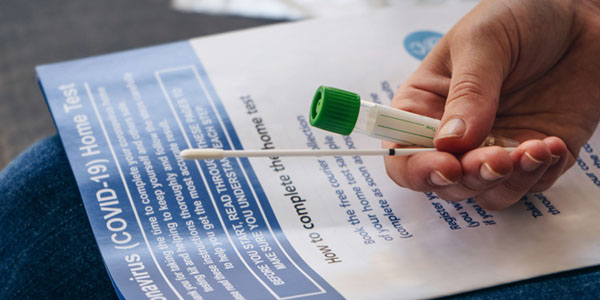School COVID testing – how has it gone?

Able to return a result within 30 minutes, millions of rapid lateral flow tests are being used across schools and homes as students re-enter classrooms after lockdown.
The government’s policy faced criticism from some this week, due to a lack of understanding of the purpose of testing and the meaning of data around it, but Alex Crozier – a senior biosciences lead at University College London and an expert in COVID testing – suggests the effective use of lateral flow devices could help reduce transmission, keep schools open and, together with vaccinations, enable the re-opening of society.
Alex said that the mass testing rollout this week has the potential to keep the ‘R’ rate below 1 – despite the millions of school-age children returning to classrooms – at a pivotal time in the pandemic for the country.
“The most important thing parents and students need to know is that, while no test is perfect, if a group is tested frequently, it is highly likely that the most infectious cases will be found earlier than would otherwise have been possible. This can make a significant dent in the transmission of the virus.
“Taking into account some of the more complicated and technical statistics on sensitivity and specificity, the most important thing I’d stress to parents this week is that lateral flow tests are extremely good at catching the vast majority of the most infectious people.”
Professor Iain Buchan, executive dean of the Institute of Population Health at the University of Liverpool is an expert in public health and data science and led the evaluation of the Liverpool city-scale community testing pilot last year.
Iain said: “There has been understandable public confusion arising from comparisons of lateral flow tests with polymerase chain reaction (PCR), as if PCR was a gold standard for testing the same thing – it is not. PCR looks for genetic material from live or dead virus as a clinical test of infection, whereas lateral flow test (LFT) looks for protein from live virus, shed by people when they are infectious – a public health test of infectiousness. PCR tests can be positive for weeks after an infected person is no longer able to pass on the virus to someone else.
“This means LFTs have significant potential as a public health tool, especially when making the most of getting results at least a day earlier than PCR – a day when people might otherwise be spreading the virus. The low cost and ease of use, without needing a laboratory, also means that lateral flow tests can be used more often, and in more places by more people, including school children.
“Also, the more people in a community who are involved in testing the more opportunities there are for local public health teams to engage them over other measures for tackling COVID.”
Alex continued: “The difficulty with this virus is that the time between catching the virus and then transmitting to your contacts is quite short, often just a few days, which means laboratory-based PCR testing, and therefore tracing, is always playing catch up and will struggle to have a real impact on reducing transmission.
“Because lateral flow test results are delivered within 30 minutes, frequent rapid testing can be a really useful tool in helping to find and isolate cases early in the infection, often before they develop symptoms or transmit. This is crucial in breaking the chains of transmission.
“As we begin to re-open society, a more effective testing system could well be the difference between keeping R below, rather than above, 1. It is crucial not to pass the inflection point too early, or we could risk a large resurgence in infections before the vaccination programme is complete.
“The majority of the lateral flow devices being used in schools and homes across the country are the Innova tests. The false positive rate of these tests is actually very low, possibly as low as 0.03%. However, when testing at such scale, it’s right to look at the impact false positives could have.
“As it stands, the first three of these tests will take place in school – it’s not recommended these are sent for a confirmatory PCR if positive. But for the subsequent tests done at home, or those following the first three, the government is recommending a confirmatory PCR which can overrule a lateral flow positive result, which essentially solves the problem of false positives from mass testing.
“Some commentaries on schools testing have been misleading over false positives expected at low prevalence levels by not looking at the absolute numbers.
“For example, on March 9 in Cheshire and Merseyside among those aged 18 or under, we saw only 18 positive out of 41,864 tested. A very small isolation requirement in population terms.”
Alex concluded: “It is great news that we are finally able to have children back in school. However, the difficulty is not so much in opening schools, but keeping them open.
“While focused, repeat testing of certain groups, such as in schools or of key workers, may well be crucial in reducing the R-rate and possibly keeping it below 1, it is an extremely complex public health intervention – The government must look to maximise the benefits and reduce possible risks and potential for harm”.



